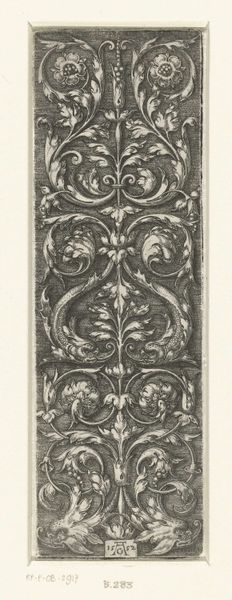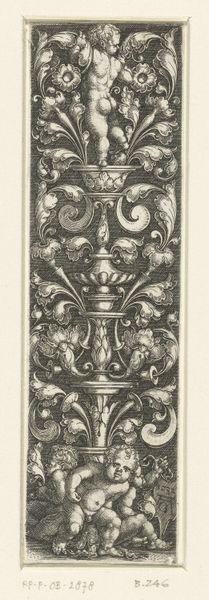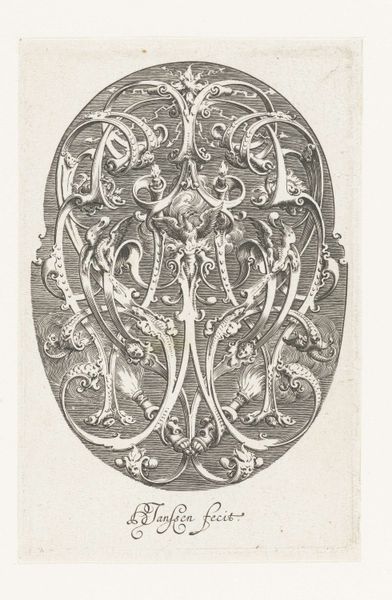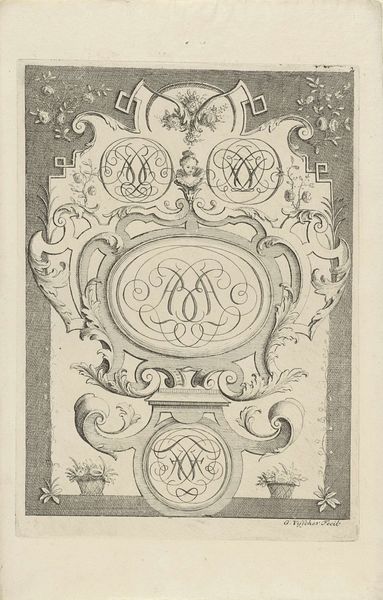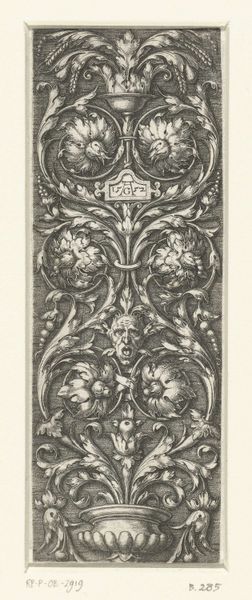
print, etching, engraving
#
allegory
# print
#
etching
#
old engraving style
#
form
#
line
#
northern-renaissance
#
grotesque
#
engraving
Dimensions: height 145 mm, width 52 mm
Copyright: Rijks Museum: Open Domain
Curator: Heinrich Aldegrever's "Vlakdecoratie met bladranken en grotesken," made in 1552, immediately strikes me with its overwhelming sense of density and careful detail. Editor: The initial impression I get is one of opulence teetering on the edge of unsettling. It feels deeply entrenched in its era, hinting at the power dynamics inherent in such ornate displays. Curator: Exactly! It's an etching and engraving, showcasing an incredibly skilled hand at manipulating the metal plate. Note the level of detail he achieves. We’re really looking at techniques of labor and reproduction here. Think about the processes and work of reproducing this design on a printing press to create multiple copies. Editor: And those reproductions had purpose. Decoration, yes, but consider the grotesque figures intertwined with those leafy vines. Grotesques historically functioned to ward off evil, but here, they also perform power—displaying the commissioner's elevated taste, knowledge of classical forms, and, therefore, control. What is the historical context of accessing, owning, commissioning an artwork such as this? Curator: The materials and processes give a specific character to the finished image. We have to understand it within a culture of printmaking, distribution, and use. Aldegrever's ability to generate such precision allowed him to create a widely appealing aesthetic product that spoke to current tastes and the economics of the time. Editor: These objects often reinforced social hierarchies through display. Note the androgynous features of the sphinxes in the lower part of the design. How does playing with gender norms in these fantastical creatures fit within the broader Renaissance ideas regarding beauty and power? What messages does this convey regarding beauty and the expectations of an elite class? Curator: Good question! From a purely material perspective, Aldegrever had to be incredibly meticulous. Etching demands precision, control, and a deep understanding of how acid affects metal. But I like how you pushed us beyond simply technical to thinking of that in relation to power! Editor: Thanks! Ultimately, art is never created in a vacuum; considering both the process and its original socio-political function enrich the understanding. Curator: Agreed. Combining knowledge of both is the only way we can properly interpret the material culture and meanings of the past!
Comments
No comments
Be the first to comment and join the conversation on the ultimate creative platform.
